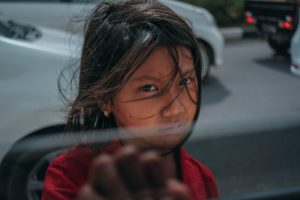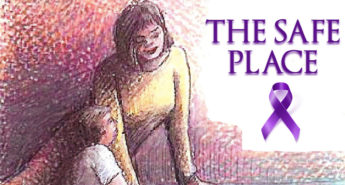 A very serious yet under-talked-about crime, which is the most heinous of crimes, is child trafficking. Unfortunately, it happens every day, and it happens right here in the small-town USA and all over this great country. There are two types of trafficking. The first and most gruesome is sex trafficking; the other is labor trafficking. Both types of trafficking affect children as well as adults.
A very serious yet under-talked-about crime, which is the most heinous of crimes, is child trafficking. Unfortunately, it happens every day, and it happens right here in the small-town USA and all over this great country. There are two types of trafficking. The first and most gruesome is sex trafficking; the other is labor trafficking. Both types of trafficking affect children as well as adults.
Human trafficking involves the use of force, fraud, or coercion to obtain some type of labor or commercial sex act. It can happen in any community, and victims can be of any age, race, gender, or nationality. There are more cases of family members selling someone they know into trafficking than a stranger. This includes mothers, fathers, aunts, uncles, grandparents, cousins, or siblings. More than 200,000 children are victims of sex trafficking in the U.S. every year, and their families or family friends are the most likely to exploit them. For 90% of victims, child trafficking starts in the home. The average age of a victim of familial trafficking in the U.S. is only five years old, and some children are victimized as early as infancy. Cases range from newborn to 18 for children.
Another population of children often targeted for human trafficking is runaway teens. One in six runaways will likely become a victim of child sex trafficking. Young men and women get fed up with school, friends, home life, being bullied, and they decided to runaway. Now living on the streets, vulnerable, and alone they become prime targets for traffickers to get to them. In other cases, a boyfriend/girlfriend may start the process of getting the child to leave or runaway.
The cycle of human trafficking starts with assessment and recruitment. Predators look for vulnerability within a victim. For some, it may be low-self esteem, and predators can spot these traits by simply watching how a young girl reacts when he calls her beautiful. If she lowers her head, she is potentially a good target. Social media sites have allowed traffickers more opportunities for immediate connections and faster engagement with vulnerable youth. The amount of information we freely offer to the world about ourselves makes it easier for traffickers to find their next victim without ever leaving the couch. Predators troll social sites to try and spot vulnerabilities; they are good at it. A statement such as “My parents are the worst” or “I’m so over school” allows the predator to connect, relate and offer a solution to the victim.
Traffickers will have conversations with their potential victims and gather as much information as possible. They will remember the information to use against them later as well. They make the conversations feel like you are talking to a friend, a listening ear that cares. All the while, they are giving the trafficker all the information they need for control later.
The next step in the cycle of human trafficking is grooming. There is no single form of force, fraud, or coercion used by predators. Each trafficker has their own style to gain the necessary power and control required to manipulate an individual into doing what he/she wants. 85% of victims reported developing a close relationship with their trafficker. This portrays the Romeo Pimp tactic of manipulating and nurturing a relationship with their victim. They manipulate their victim into believing they are truly in a romantic relationship by buying them gifts, taking them out to eat, and spoiling them in some form. This tactic creates a bond between victim and trafficker, and often the victim believes they are selling themselves because it is how they contribute to the relationship.
The second type of trafficker is a Gorilla Pimp; this uses violence to gain control and power over their victims. Again, the victim will do what they are told based on the fear of what will happen if they do not comply. Often a Romeo pimp will become violent after they have gained control over their victim.
The trafficker will start to begin separating the victim from friends and family. Convince them that the only person that “truly” loves them or cares about them is the trafficker or that no one else wants them.
Breaking is the next phase in the cycle. The breaking phase occurs when a trafficker introduces his victim into “the life.” For some, this can be very violent, including gang rapes; for others, it may be giving an illicit massage to one of the predator’s friends. Shame is often used to maintain power and control. A statement like: “You are just a whore now,” “No one will believe you,” “Your family won’t love you anymore,” “You are the one committing a crime” may be used. If recovery of a victim is not made prior to this breaking phase, it becomes much more difficult.
At this phase, the trafficker will tell the victim, “they owe them” or “they need to pay them back.” The victim, at this point, has a connection and a bond with the trafficker and wants to make them happy. If they refuse, the trafficker will use something they learned in the assessment and recruitment phase to use against them. If the victim said, “My grandmother means more to me than anything” or “my niece, nephew, pet, best friend, is my world,” the predator will remember that and use it against them. They may tell them, “if you refuse, I will kill your (whatever they love or are attached to).”
The last stage of the cycle is maintenance and automatic. Once a victim has reached this phase, they are basically running on autopilot. Continuing to comply in order to avoid whatever their trafficker has threatened them with. This could include fear of violence, fear of their family being harmed, or feeling that they no longer have worth. The use of technology has allowed traffickers to engage with buyers at a more frequent and widespread capacity. A predator can easily advertise online through various escort sites. 75% of victims reported being advertised online while in “the life.” One in four victims surveyed reported that they saw more than ten buyers per day when advertised online. Imagine the trauma associated with one unwanted sexual encounter and multiply that by ten each day.
Children are advertised on the dark or black web. It is easier to get to than one would think. While the FBI and Homeland security, and other agencies try to monitor the dark web, they can not monitor every site.
In many cases, traffickers break the victims to the point that they can be left on their own, and they will not do anything to get away from their traffickers. They are convinced that if they leave or if they speak up, they will be harmed, or someone they love will be harmed. Victims are convinced that the trafficker will find them no matter where they run. The traffickers take all of their money. They are worried about where they will get food, water, shelter, or any basic needs met.
What can you do to help fight trafficking? First, learn the signs of trafficking. A few signs to watch for are unexplained school absences, change in attire, behavior, or relationships, presence of older “boyfriend” or “girlfriend,” sudden presence of expensive material possessions, chronic running away, signs of physical trauma, substance abuse to name a few.
If you believe someone you know or have seen is a victim of trafficking, please contact your local authorities. The national hotline number for human trafficking is 1-866-347-2423. If you are a victim, you can text HELP to BEFREE (233733). You can also contact The Safe Place hotline at 1-888-554-2501 or our Perryville office at 501-889-2030. If you or someone you know is a victim of domestic violence, child abuse, or trafficking, please do not hesitate to reach out to your local law enforcement or The Safe Place.




Leave a Reply